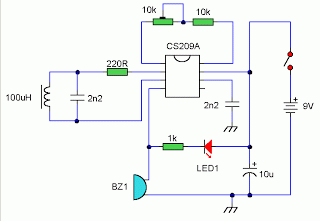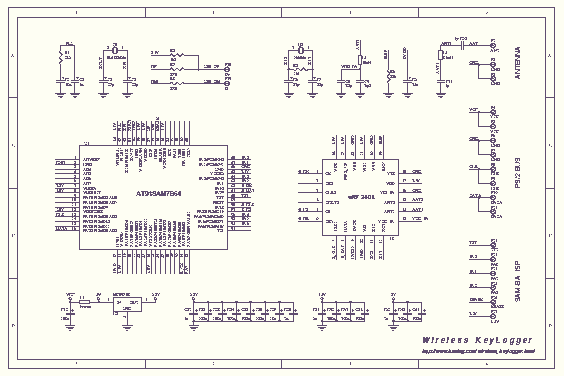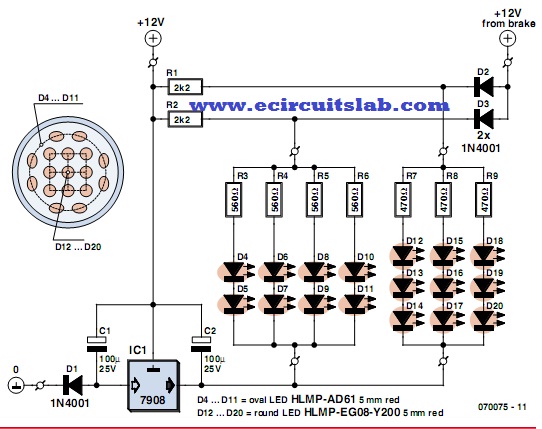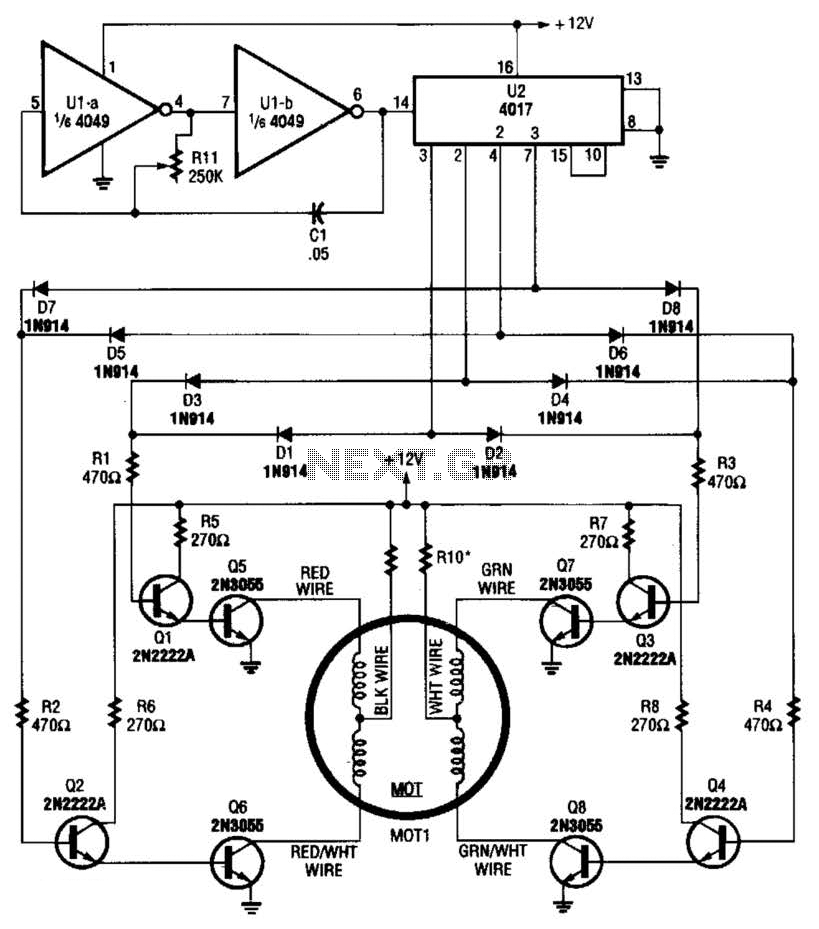
JFET-Bipolar Cascode Circuit
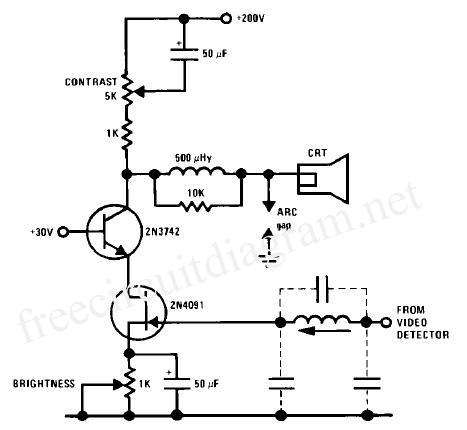
A JFET-bipolar cascode circuit is designed to deliver complete video output for driving the cathode of a CRT. The configuration offers an approximate gain of 90. The cascode arrangement mitigates issues related to the Miller capacitance of the JFET 2N4091, facilitating direct drive from the video detector. Key components include the JFET, bipolar cascode circuit, CRT, 2N4091, and video amplifier.
The JFET-bipolar cascode circuit serves as an effective solution for driving cathode ray tube (CRT) displays, particularly in video applications. The circuit leverages the advantages of both JFET and bipolar junction transistors (BJTs) in a cascode configuration, which enhances performance characteristics.
In this configuration, the JFET acts as the input stage, providing high input impedance and low noise, which is critical for video signal integrity. The 2N4091 JFET, known for its low noise and high-frequency performance, is ideal for this application. The cascode arrangement involves stacking the JFET with a bipolar transistor, which effectively boosts the output while minimizing the effects of Miller capacitance. This is particularly beneficial in high-frequency applications, where Miller capacitance can significantly limit bandwidth and signal fidelity.
The output stage of the circuit is designed to interface directly with the CRT cathode, ensuring that the video signal is delivered with sufficient amplitude and clarity. The gain of approximately 90 allows for effective amplification of weak video signals, making it suitable for various applications where video signal processing is required.
Overall, the JFET-bipolar cascode circuit is a robust solution for video amplification, combining the strengths of JFETs and BJTs to deliver high-quality output suitable for CRT displays. Its design addresses common challenges in high-frequency applications, ensuring reliable and efficient performance.JFET-bipolar cascode circuit will provide full video output to drive the CRT cathode. The advantage is about 90. Cascode configuration eliminates problems with JFET 2N4091 Miller capacitance, thus allowing the drive directly from the video detector. JFET, Bipolar Cascode Circuit, CRT, 2N4091, video amplifier. 🔗 External reference
The JFET-bipolar cascode circuit serves as an effective solution for driving cathode ray tube (CRT) displays, particularly in video applications. The circuit leverages the advantages of both JFET and bipolar junction transistors (BJTs) in a cascode configuration, which enhances performance characteristics.
In this configuration, the JFET acts as the input stage, providing high input impedance and low noise, which is critical for video signal integrity. The 2N4091 JFET, known for its low noise and high-frequency performance, is ideal for this application. The cascode arrangement involves stacking the JFET with a bipolar transistor, which effectively boosts the output while minimizing the effects of Miller capacitance. This is particularly beneficial in high-frequency applications, where Miller capacitance can significantly limit bandwidth and signal fidelity.
The output stage of the circuit is designed to interface directly with the CRT cathode, ensuring that the video signal is delivered with sufficient amplitude and clarity. The gain of approximately 90 allows for effective amplification of weak video signals, making it suitable for various applications where video signal processing is required.
Overall, the JFET-bipolar cascode circuit is a robust solution for video amplification, combining the strengths of JFETs and BJTs to deliver high-quality output suitable for CRT displays. Its design addresses common challenges in high-frequency applications, ensuring reliable and efficient performance.JFET-bipolar cascode circuit will provide full video output to drive the CRT cathode. The advantage is about 90. Cascode configuration eliminates problems with JFET 2N4091 Miller capacitance, thus allowing the drive directly from the video detector. JFET, Bipolar Cascode Circuit, CRT, 2N4091, video amplifier. 🔗 External reference

